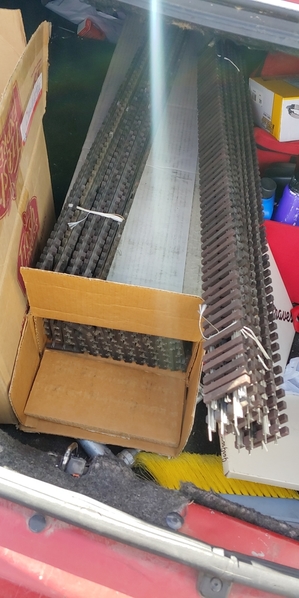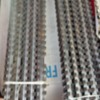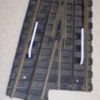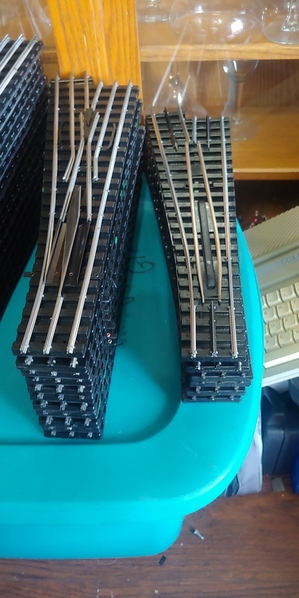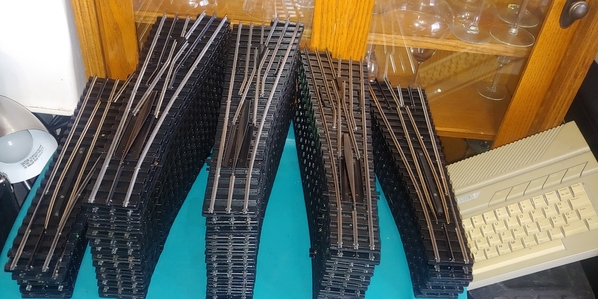So. I decided to see what would happen if I took one of the most rusty switches and soaked it in vinegar for a couple of days.
After I soaked it, I rinsed it off with a brush and some baking soda. Then I used a sanding block to polish the top of the rails and then sprayed it down with wd40 and wiped it down.
The top picture is one of the other switches that was almost as bad as the one I soaked . I forgot to get a pic of it before I soaked it but it was in very slightly worse condition. The bottom picture is of how the finished switch looks now.

 \
\
You can see how the vinegar ate away all the paint on the points and frog but honestly, i'm not worried about that at 40 cents a switch.  I think it should be plenty usable now.
I think it should be plenty usable now.
I am going to try to restore all of the rusty switches like that but use Evaporust or CLR which hopefully will be much quicker. Then I will have a lovely stash of ready to go restored switches when I finally setup a layout someday.
Even if I don't use them now, I do want to restore them so the rust doesn't continue to eat away at the switches.
And mind you, I only have like 7 or so of the extremely rusty switches like above. The majority of them are not nearly as rusty, they have more bits of surface rust but will probably take to cleaning much better.
I just wanted to start off with the worst example to see just how far I could restore it.









